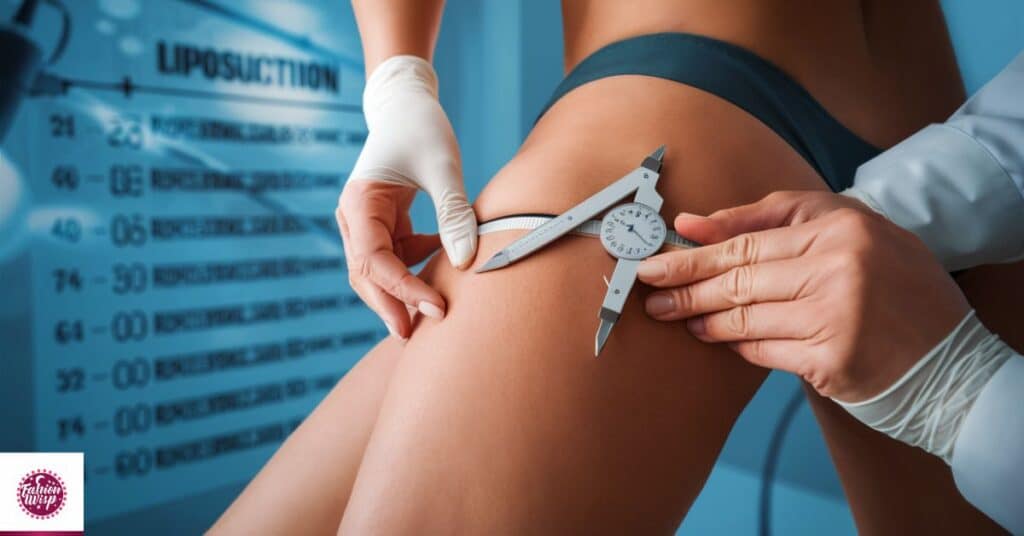Are you frustrated with stubborn fat that just won’t budge, no matter how much you diet or exercise? If so, you are certainly not alone. Many people struggle with persistent pockets of fat that seem impossible to get rid of through traditional weight-loss methods. This is where liposuction, a popular fat removal procedure, can be an incredibly effective solution.
It is crucial to have realistic expectations about how much fat liposuction can actually eliminate. While the results can be dramatic, there are limits to how much fat can safely be removed during this procedure. In this comprehensive guide, we’ll reveal the truth about maximum fat removal with liposuction.
Factors That Determine How Much Fat Liposuction Can Remove
The amount of fat that can be removed with liposuction isn’t a one-size-fits-all number. Several key factors come into play, including:
- Body Mass Index (BMI): Your BMI, which considers your height and weight, plays a significant role. Patients with a higher BMI may have more fat available for removal, but surgeons also need to account for potential increased risks with extensive liposuction on larger persons.
- Treatment Areas: The volume of fat that can be extracted varies depending on the specific areas being treated. For example, the abdomen tends to have more substantial fat deposits compared to areas like the arms or chin.
- Skin Elasticity: Ideal liposuction candidates have good skin elasticity, which allows the skin to “bounce back” smoothly after fat removal. Poor elasticity can lead to an uneven or sagging appearance post-op.
- Overall Health: Underlying health conditions, such as diabetes or heart disease, may impact how much fat can safely be removed during a single procedure.
- Liposuction Technique: Traditional liposuction has different removal capabilities compared to more advanced techniques like Body Tite or VASER liposuction, which can sometimes extract larger amounts.
To illustrate the impact of these factors, consider this real patient example: A healthy 5’5″ woman with good skin elasticity and a BMI of 24 (just outside the “normal” range) wanted liposuction on her abdomen and flanks. Her surgeon determined she could safely have up to 4 liters removed using the super-wet BodyTite technique.
Read This Blog:
How Much Does A Lip Flip Cost
What the Experts Recommend as the Maximum Safe Amount

As a general guidance, we recommend maximum total fat removal limits of 5 liters for traditional liposuction. American Society of Plastic Surgeons
The American Society of Plastic Surgeons (ASPS) recommends a maximum of around 5 liters or 11 pounds of fat extraction during a single liposuction procedure. However, it’s important to note that this is not a hard limit, but rather a guideline.
Experienced, board-certified plastic surgeons make personalized assessments about maximum safe removal volumes on a case-by-case basis. As stated by Dr. Mariam Awada, a renowned Michigan liposuction surgeon:
Guidelines provide a useful benchmark, but every person is unique. Assessing safe maximum fat removal requires an in-depth evaluation of multiple factors beyond just BMI.
Some surgeons aim to stay more conservative, rarely exceeding 4 liters removed. In contrast, there’s a dangerous trend of less ethical surgeons, often promoted on Instagram, promising excessive liposuction far beyond safe limits just to attract persons.
It’s worth noting that the ASPS guidelines are based on extensive research and data analysis to determine the safest maximum quantities for the average person. Exceeding these recommended limits increases the risk of complications exponentially.
Dr. Robert Singer, a board-certified plastic surgeon in California, explains, “The 5 liter recommendation accounts for factors like fluid shifts, metabolic demands, and tissue trauma that occur with larger volume liposuction. Removing over 5 liters pushes most persons‘ bodies beyond their capacity to compensate safely.
So How Much Fat Does the Average Liposuction Remove?
While the ASPS recommends a maximum 5 liter limit, the typical liposuction procedure actually removes far less fat than this. On average, most persons have between 1-4 liters of fat extracted, though the precise amount varies substantially based on individual factors.
Here are some common liposuction treatment areas and the average fat removal volumes:
- Abdomen: 2-4 liters
- Thighs: 1-2 liters
- Back/Bra Area: 1-3 liters
- Arms: 0.5-1 liter
- Chin/Neck: 0.25-0.5 liters
It’s worth emphasizing that these are just general estimates. The actual fat removal quantity depends greatly on the person’s body composition and goals for that specific area.
For example, a very slender person seeking arm liposuction may only have 0.3 liters removed to achieve their desired contour. In contrast, a person with more substantial fat deposits in the abdomen could have the full 4 liters extracted safely by an experienced surgeon.
The variability underscores why working with an expert liposuction provider is so critical. As Dr. Awada states, “There’s no universal amount that works for everyone – safe fat removal has to be customized on an individual basis.”
The Risks of Removing Too Much Fat with Liposuction

While it may be tempting to think “the more fat removed, the better,” extracting an excessive amount of fat can actually jeopardize your safety and overall results. Some potential complications of overly aggressive liposuction include:
- Contour Irregularities: Removing too much fat, especially in a concentrated area, can lead to dents, rippling, or other unnatural-looking contour deformities.
- Skin Laxity: Without the underlying fat to “fill it out,” the skin may end up sagging or having a loose, deflated appearance.
- Seromas/Hematomas: Disrupting larger volumes of tissue increases the risk of fluid accumulations (seromas) or blood collecting (hematomas) under the skin.
- Shock/Complications: Extracting massive amounts of fat can potentially trigger metabolic issues, kidney problems, or even life-threatening complications like shock.
One powerful example highlighting these risks is the case of Tammy, a Los Angeles mother who sought liposuction to remove fat from her abdomen, back, and thighs. Despite being advised the safe maximum was around 5 liters, she insisted her surgeon remove over 10 liters to achieve an extremely lean look.
The results were disastrous – Tammy suffered severe contour deformities, sagging skin, prolonged swelling, and nearly died from kidney failure due to the excessive volume removed. It took multiple complex revision procedures to correct the issues, at great physical, emotional, and financial cost.
“Tammy’s case is an unfortunate example of how removing too much fat can completely undermine the benefits of liposuction, explains Dr. Tara Margareten, a New York liposuction specialist. Rather than the sculpted look she wanted, she ended up with far worse contours from the overly aggressive liposuction.
Even in the hands of a skilled surgeon, extracting over 5 liters increases risks exponentially. “At that level, you’re really taxing the body’s reserves and ability to compensate,” cautions Dr. Margareten. “It simply isn’t worth jeopardizing your health for a few extra liters of fat removal.
Also Read This Blog:
How Much Is Arm Lipo
| Complication | Risk with Reasonable Removal | Risk Past 5 Liters |
| Contour Deformities | 5-10% | 30-50% |
| Seroma Formation | 10-15% | 25-40% |
| Skin Laxity | 10-20% | 40-60% |
| Need for Revision | 5-10% | 20-35% |
As this chart illustrates, the chances of major complications rise dramatically when super-aggressive liposuction past clinical guidelines is performed. Prioritizing a reasonable, conservative approach is crucial for optimizing safety.
How to Get Safe, Satisfying Liposuction Results

So how can you ensure fantastic liposuction outcomes without compromising your health? Follow these expert tips:
- Research Experienced, Qualified Surgeons: Board-certified plastic surgeons with years of specialized liposuction training are a must. Avoid inexperienced providers or “chop shops” promising unre.
- Research Experienced, Qualified Surgeons: Board-certified plastic surgeons with years of specialized liposuction training are a must. Avoid inexperienced providers or “chop shops” promising unrealistic results.
- Be Upfront About Your Goals: In your consultation, be completely honest about the changes you’re hoping to achieve through liposuction. This allows your surgeon to set appropriate expectations.
- Consider Combining Procedures: For some patients, combining liposuction with other treatments like a tummy tuck can optimize overall body contouring.
- Follow Post-Op Instructions Carefully: Wearing compression garments, limiting activity temporarily, and adhering to your surgeon’s recovery protocols is essential for reducing risks and achieving your desired contour.
- Maintain Your Results Long-Term: While liposuction permanently removes fat cells, you should still adopt a healthy lifestyle to prevent remaining cells from expanding. Proper diet and exercise habits are key.
- Trust Your Surgeon’s Judgment: Your plastic surgeon has the experience and expertise to recommend the maximum amount of safe fat removal for your unique situation. It’s wise to follow their professional advice.
The most successful liposuction results come when there is a partnership between the patient and surgeon, explains Dr. Carolyn Chang, a triple board-certified plastic surgeon in Pennsylvania. Patients need to be fully transparent about their goals, and then have reasonable expectations set by their surgeon’s professional opinion.
Case Study: Sarah’s Liposuction Journey

Sarah, a 32-year-old teacher, had been struggling with stubborn saddlebags on her outer thighs for years despite an active lifestyle. After having two children, she just couldn’t regain her pre-baby body no matter how much she worked out.
I finally decided that a little lipo might be what I needed to get over that final hump,” she said during her consultation with Dr. Chang. “But I also didn’t want to go overboard and end up with loose skin or weird dents.
After an extensive evaluation of Sarah’s weight, skin elasticity, fat distribution, and other factors, Dr. Chang recommended removing approximately 2 liters of fat combined from both thighs using VASER liposuction.
Any more than that and we’d risk contour issues or laxity,” Dr. Chang cautioned. “My role is to guide patients toward an outcome that looks smooth and natural, not overly suctioned out.
Sarah decided to trust Dr. Chang’s assessment rather than insist on an excessive amount of fat removal. Six months after her procedure, she was delighted with her slimmer, sculpted thigh contours. More importantly, she avoided any complications and had a straightforward recovery.
I am so glad I listened to my surgeon’s advice on what was safe rather than falling for the ‘more is better’ mindset,” Sarah shared. “My results are exactly what I hoped for – no surprises or issues at all.
Remember, liposuction is meant to refine your shape not serve as a weight-loss solution. By selecting a top surgeon, having reasonable expectations, and prioritizing your safety, you can reap the outstanding slimming and contouring benefits liposuction provides.
Take the First Step Toward Your Liposuction Goals
Ready to find out how much fat could safely be removed to help you meet your body contouring goals. Here are some recommended, experienced plastic surgery practices to consider for your liposuction consultation:
Be sure to verify the surgeons’ credentials, read patient reviews, and have an in-person consultation to ensure you find a provider you can trust. The path to safe, satisfying liposuction results starts with the right surgical team.
Frequently Asked Question
Can I lose 10 kg with liposuction?
No, liposuction is not designed for large-scale weight loss and typically removes 1-3 kg of fat per procedure.
How much weight can liposuction take off?
Liposuction usually results in a weight loss of about 1-3 kg (2-6 pounds), focusing on body contouring rather than significant weight loss.
Can liposuction remove 30 pounds?
No, liposuction is not intended for removing such large amounts of weight; the safe removal limit is generally around 5 liters (approximately 11 pounds).
Can you lose 20kg from liposuction?
No, losing 20 kg (44 pounds) through liposuction is unsafe and not feasible; the procedure is meant for body contouring with a typical removal of 1-3 kg.
How many kg is 5 liters of fat?
Five liters of fat approximately equates to 4.5-5 kg (10-11 pounds), depending on the density of the fat.
Conclusion
Liposuction offers a remarkable way to permanently eliminate stubborn fat pockets, there are very real limits to how much fat can safely be removed during this procedure. Multiple factors like BMI, treatment areas, and overall health must be carefully evaluated.
As a general guideline, the American Society of Plastic Surgeons suggests a maximum of around 5 liters of total fat extraction. However, most patients typically have far less – between 1-4 liters – removed through liposuction, varying by their individualized needs and surgical plan.
Extracting an excessive volume of fat raises the risk of serious complications like contour deformities, loose skin, fluid accumulations, and even life-threatening conditions like shock. That’s why it’s absolutely crucial to work with an experienced, board-certified plastic surgeon who prioritizes your safety above all else.
By openly discussing your goals, understanding reasonable expectations, and closely following your surgeon’s protocols – including tips for long-term maintenance of your results – you can achieve a slimmer, smoother, more sculpted look through liposuction without jeopardizing your health.
If you are considering liposuction and want to learn what an ideal, customized fat removal plan would entail for your specific needs, we encourage you to contact a trusted, qualified plastic surgery practice in your local area today to schedule a consultation.







